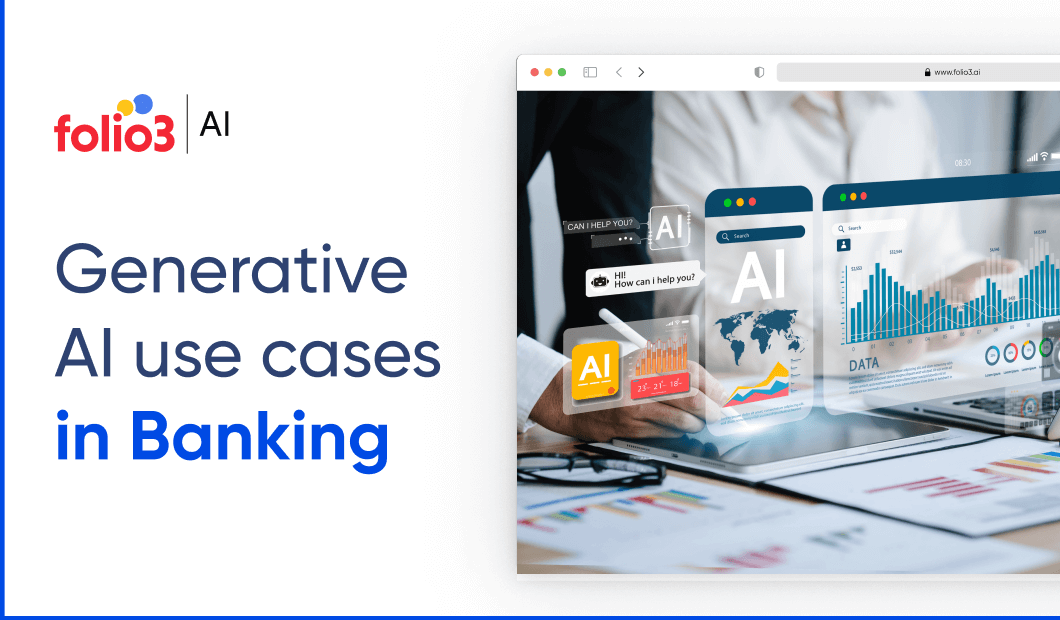Generative AI has provided lucrative benefits to industries. Approximately 92% of Fortune 500 companies have adopted generative AI technologies. In the banking sector, it is being used to cater to customer service, manage operations, detect fraud, and personalize financial products.
Generative AI in banking is almost automating inscrutable tasks like document processing, fraud detection, and risk management. It enables banks to analyze data quickly for fraud detection, automate credit approval and loan underwriting, and create personalized financial advice through AI-powered virtual assistants.
For example, AI helps create pitchbooks in investment banking and ensures compliance with regulatory reports. This leads to faster, more efficient operations, reducing manual workload and enhancing customer experience.
One leading example is JPMorgan Chase’s use of generative AI to automate legal contract review and improve the accuracy of financial forecasting, significantly cutting down processing time and human error.
Even, In recent news, on April 5, 2025, several global banks like HSBC and Morgan Stanley have also announced major investments in generative AI tools to boost efficiency and competitiveness in a rapidly evolving digital economy. To explore how exactly banks are putting this technology into action, read the use cases listed below.
Top 7 Generative AI Use Cases in Banking
Banking involves complex operations where any disruption can affect both the system and customer trust. With a strong focus on security, compliance, and customer satisfaction, banks are turning to gen AI services to streamline processes. Generative AI helps accelerate these operations with greater efficiency and fewer errors.
Here’s a look at some of the key ways it’s being used in banking.
1. Customer Support and Virtual Assistants
Customer satisfaction is a top priority in banking, and Generative AI has significantly transformed customer support in banking through the development of sophisticated virtual assistants and chatbots. Unlike traditional rule-based systems, these AI-driven assistants can engage in more natural and context-aware conversations, providing personalized responses to customer inquiries. This advancement not only enhances customer satisfaction but also reduces operational costs by automating routine tasks.
For instance, AI-powered chatbots have been shown to deliver personalized services effectively, improving service efficiency and customer experience in the banking sector. citeturn0search6
2. Personalized Financial Advice
Generative AI enables banks to offer tailored financial advice by analyzing individual customer data, including spending habits, income, and financial goals. This personalized approach allows for the creation of customized investment strategies and financial plans that align with each customer’s unique circumstances.
Research indicates that AI tools can scrutinize credit reports, identify areas for improvement, and propose personalized action plans designed to enhance customers’ loan approval prospects.
3. Fraud Detection and Prevention
The application of generative AI in fraud detection has enhanced banks’ abilities to identify and prevent fraudulent activities in real time. As it constantly analyzes transaction patterns and detects anomalies, AI systems can flag suspicious activities promptly.
This proactive approach is effective across various channels, including ATMs and online banking platforms, thereby safeguarding customer assets and reducing financial losses. Moreover, generative AI can adapt to new fraud tactics, maintaining robust defense mechanisms against evolving threats.
4. Document Generation and Automation
Generative AI simplifies document processing in banking by automating the creation and management of various documents, such as loan applications and compliance reports. This automation accelerates processes like loan approvals, with banks experiencing up to 70% faster processing times.
Additionally, AI-driven document automation improves fraud detection rates by 50% and lowers compliance costs by 40%, leading to enhanced operational efficiency and reduced errors.
5. Marketing and Customer Engagement
In marketing, generative AI facilitates the creation of personalized content and campaigns by analyzing customer data to identify preferences and behaviors. This capability enables banks to deliver targeted advertisements and offers, thereby increasing customer engagement and conversion rates.
Furthermore, AI-driven predictive marketing allows banks to engage customers with timely, relevant offers, enhancing the overall customer experience.
6. Risk Management and Scenario Simulation
Generative AI manages risk by simulating various financial scenarios and assessing potential impacts on the bank’s portfolio. By leveraging historical data and external factors, AI models can predict potential risks and outcomes, enabling banks to develop proactive strategies to mitigate adverse effects.
This approach supports more informed decision-making and strengthens the institution’s resilience against financial uncertainties.
7. Code and Software Generation for Internal Tools
Generative AI assists in the development of internal tools by automating code generation, which accelerates software development cycles and reduces the likelihood of human error. Financial institutions, such as Goldman Sachs, have deployed AI tools for code generation, resulting in increased developer productivity and efficiency.
This application not only eases up internal processes but also allows for the rapid deployment of new technologies and services.
Final word
As seen in the use cases, generative AI in banking effectively handles complex, detail-oriented tasks with remarkable accuracy. However, navigating the evolving AI landscape requires balancing innovation with risk management. Banks must adopt strategic models that align with their objectives to fully use this transformative technology.
While scaling Generative AI in banking initiatives poses challenges, a focused approach will enable banks to fully use significant benefits and strengthen their competitive position in the market.

Areeb is a versatile machine learning engineer with a focus on computer vision and auto-generative models. He excels in custom model training, crafting innovative solutions to meet specific client needs. Known for his technical brilliance and forward-thinking approach, Areeb constantly pushes the boundaries of AI by incorporating cutting-edge research into practical applications, making him a respected developer in folio3.









